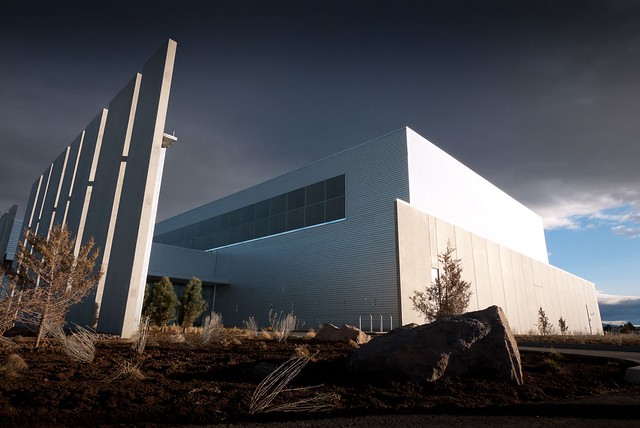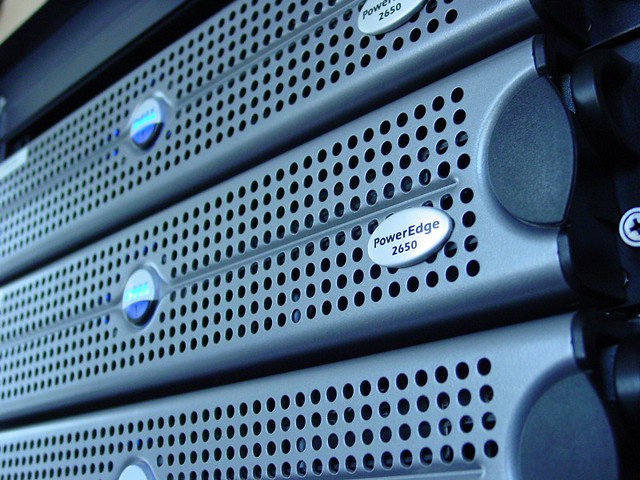
Back in 2006 I was the co-founder of a Data Centre in Cork called Cork Internet eXchange. We decided, when building it out, that we would design and build it as a hyper energy-efficient data centre. At the time, I was also heavily involved in social media, so I had the crazy idea, well, if we are building out this data centre to be extremely energy-efficient, why not open source it? So we did.
We used blogs, flickr and video to show everything from the arrival of the builders on-site to dig out the foundations, right through to the installation of customer kit and beyond. This was a first. As far as I know, no-one had done this before and to be honest, as far as I know, no-one since has replicated it. Until today.
Today, Facebook is lifting the lid on its new custom-built data centre in Prineville, Oregon.
Not only are they announcing the bringing online of their new data centre, but they are open sourcing its design, specifications and even telling people who their suppliers were, so anyone (with enough capital) can approach the same suppliers and replicate the data centre.
Facebook are calling this the OpenCompute project and they have released a fact sheet [PDF] with details on their new data center and server design.
I received a pre-briefing from Facebook yesterday where they explained the innovations which went into making their data centre so efficient and boy, have they gone to town on it.
Data centre infrastructure
On the data centre infrastructure side of things, building the facility in Prineville, Oregon (a high desert area of Oregon, 3,200 ft above sea level with mild temperatures) will mean they will be able to take advantage of a lot of free cooling. Where they can’t use free cooling, they will utilise evaporative cooling, to cool the air circulating in the data centre room. This means they won’t have any chillers on-site, which will be a significant saving in capital costs, in maintenance and in energy consumption. And in the winter, they plan to take the return warm air from the servers and use it to heat their offices!
By moving from centralised UPS plants to 48V localised UPS’s serving 6 racks (around 180 Facebook servers), Facebook were able to re-design the electricity supply system, doing away with some of the conversion processes and creating a unique 480V distribution system which provides 277V directly to each server, resulting in more efficient power usage. This system reduces power losses going in the utility to server chain, from an industry average 11-17% down to Prineville’s 2%.
Finally, Facebook have significantly increased the operating temperature of the data center to 80.6F (27C) – which is the upper limit of the ASHRAE standards. They also confided that in their next data centre, currently being constructed in North Carolina, they expect to run it at 85F – this will save enormously on the costs of cooling. And they claim that the reduction in the number of parts in the data center means they go from 99.999% uptime, to 99.9999% uptime.
New Server design
Facebook also designed custom servers for their data centres. The servers contain no paint, logos, stickers bezels or front panel. They are designed to be bare bones (using 22% fewer materials than a typical 1U server) and for ease of serviceability (snap-together parts instead of screws).
The servers are 1.5U tall to allow for larger heat sinks and larger (slower turning and consequently more efficient) 60mm fans. These fans only take 2-4% of the energy of the server, compared to 10-20% for typical servers. The heat sinks are all spread at the back of the mother board so none of them will be receiving pre-heated air from another heat sink, reducing the work required of the fans.
The server power supply accepts both 277V AC power from the electrical distribution system and 44V DC from the UPS in the event of a utility power failure. These power supplies have a peak efficiency of 94.5% (compared to a more typical 90% for standard PSU’s) and they connect directly to the motherboard, simplifying the design and reducing airflow impedance.
Open Compute
Facebook relied heavily on open source in creating their site. Now, they say, they want to make sure the next generation of innovators don’t have to go through the same pain as Facebook in building out efficient data centre infrastructure. Consequently, Facebook is releasing all of the specification documentation which it gave to its suppliers for this project.
Some of the schematics and board layouts for the servers belong to the suppliers so they are not currently being published, though Facebook did say they are working with their suppliers to see if they will release them (or portions of them) but they haven’t reached agreement with the suppliers on this just yet.
Asked directly about their motivations for launching Open Compute Facebook’s Jay Park came up with this classic reply
… it would almost seem silly to do all this work and just keep it closed
Asking Facebook to unfriend coal
Greenpeace started a campaign to pressure Facebook into using more renewable energy resources due to the fact that Pacific Power, the energy supplier Facebook will be using for its Prineville data center produces almost 60% of its electricity from burning coal.
Greenpeace being Greenpeace, created a very viral campaign, using the Facebook site itself, and the usual cadre of humurous videos etc., to apply pressure on Facebook to thinking of sourcing its electricity from more renewable sources.
When we asked Facebook about this in our briefing, they did say that their data centre efforts are built around many more considerations than just the source of energy that comes into the data centre. They then went on to maintain that they are impressed by Pacific Power’s commitment to moving towards renewable sources of energy (they are targeting having 2,000MW of power from renewables by 2013). And they concluded by contending that the efficiencies they have achieved in Prineville more than offsets the use of coal which powers the site.
Conclusion
Facebook tell us this new custom data centre at Prineville has a PUE of 1.07, which is very impressive.
They have gone all out on innovating their data centre and the servers powering their hugely popular site. More than that though, they are launching the Open Compute Project giving away all the specs and vendor lists required to reproduce an equally efficient site. That is massively laudable.
It is unfortunate that their local utility has such a high gen-mix of coal in its supply to besmirch an otherwise great energy and sustainability win for Facebook. The good thing though is that as the utility adds to its portfolio of renewables, Facebook’s site will only get greener.
For more on this check out the discussions on Techmeme
You should follow me on Twitter here
Photo credit FaceBook’s Chuck Goolsbee







